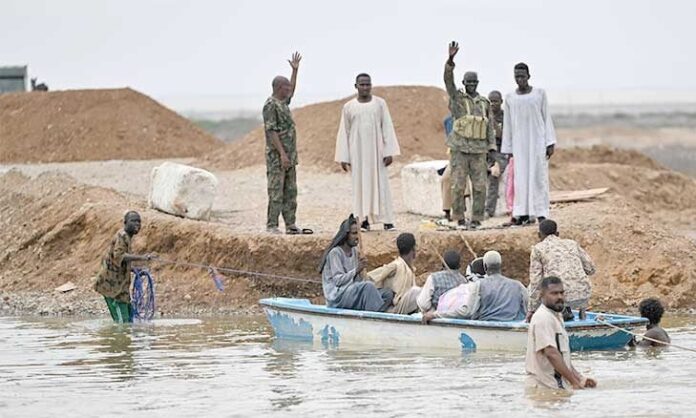Vast areas of Sudan are witnessing unprecedented floods as water levels of the Nile and its tributaries continue to rise, submerging residential neighborhoods and large tracts of farmland. The crisis has sparked urgent government warnings and repeated appeals from citizens for swift intervention to mitigate the damage.
Official Warnings and Alerts
The Ministry of Irrigation and Water Resources confirmed in a statement that Nile levels have reached flooding stages at several major monitoring stations, including Madani, Khartoum, Shendi, Atbara, Berber, and Jebel Aulia. It added that the states of Sennar, Gezira, Khartoum, River Nile, and White Nile have already entered a danger zone, cautioning residents living near riverbanks not to underestimate the risk and urging them to take precautionary measures to protect both lives and property.
The ministry further reported that “water gauges recorded flood levels at more than one point along the Blue Nile, White Nile, and the Main Nile,” warning that levels are expected to keep rising throughout the week.
Collapsed Embankments and Flooded Neighborhoods
In Wad Ramli, north of Bahri city, Nile waters swept into the area after the collapse of an earthen embankment that had served as the main defense line, leading to the flooding of many homes and properties. Floodwaters have also begun penetrating southern neighborhoods of Khartoum—particularly Al-Kalakla and Al-Shuqaylab—where residents are struggling to build sand barriers and earthen dikes under difficult and resource-limited conditions.
Videos circulating on social media showed residents appealing to authorities for urgent assistance, as water levels in southern Khartoum continued to rise, extending toward Gezira and Aburoof in Omdurman.
Farmlands Under Water
The floods have also destroyed thousands of acres of agricultural land. In Gezira State, the Blue Nile inundated farmland in areas such as Deim Al-Mashaykha, Umm Duluka, and Qandal, destroying 176 farms spanning about 1,764 acres. More than 238 farmers, who rely heavily on these lands for producing vegetables and fruits such as mango, citrus, bananas, and leafy greens, have been directly affected.
In other states, including the Blue Nile, White Nile, and Northern regions, Nile waters also submerged extensive agricultural areas, raising fears of devastating losses to the 2025 summer farming season.
Water Flow and Dam Data
The General Administration for Nile Water reported that inflows from the Blue Nile decreased to 699 million cubic meters per day, though water levels across the country remain dangerously high. Data from major dams reflect continuous pressure on waterways: Roseires Dam recorded a discharge of 613 million cubic meters per day, Sennar Dam around 688 million cubic meters, while Merowe Dam exceeded 730 million cubic meters per day.
Impact of Torrential Rains
The Ministry of Health revealed that heavy rainfall accompanying the floods in recent days directly affected 386 families—nearly 1,876 individuals—in the states of Gezira, Northern, and White Nile. Since the start of the rainy season in late June until September 25, more than 24,992 families—equivalent to about 125,056 individuals—have been impacted nationwide.
A Recurring Seasonal Crisis
Sudan regularly faces destructive floods during the rainy season, which spans from June to October. Around 80 percent of the Nile’s waters come from the Blue Nile, originating in the Ethiopian highlands, before it joins the White Nile in Khartoum. The Blue Nile itself flows for 1,622 kilometers from Lake Tana in Ethiopia to Sudan’s capital, while the entire Nile stretches 6,650 kilometers through 11 countries before reaching the Mediterranean Sea.
This year, however, with floodwaters reaching heavily populated areas and fertile farmland, fears are mounting that the situation could escalate into a wide-scale humanitarian disaster unless urgent emergency and relief measures are taken.


